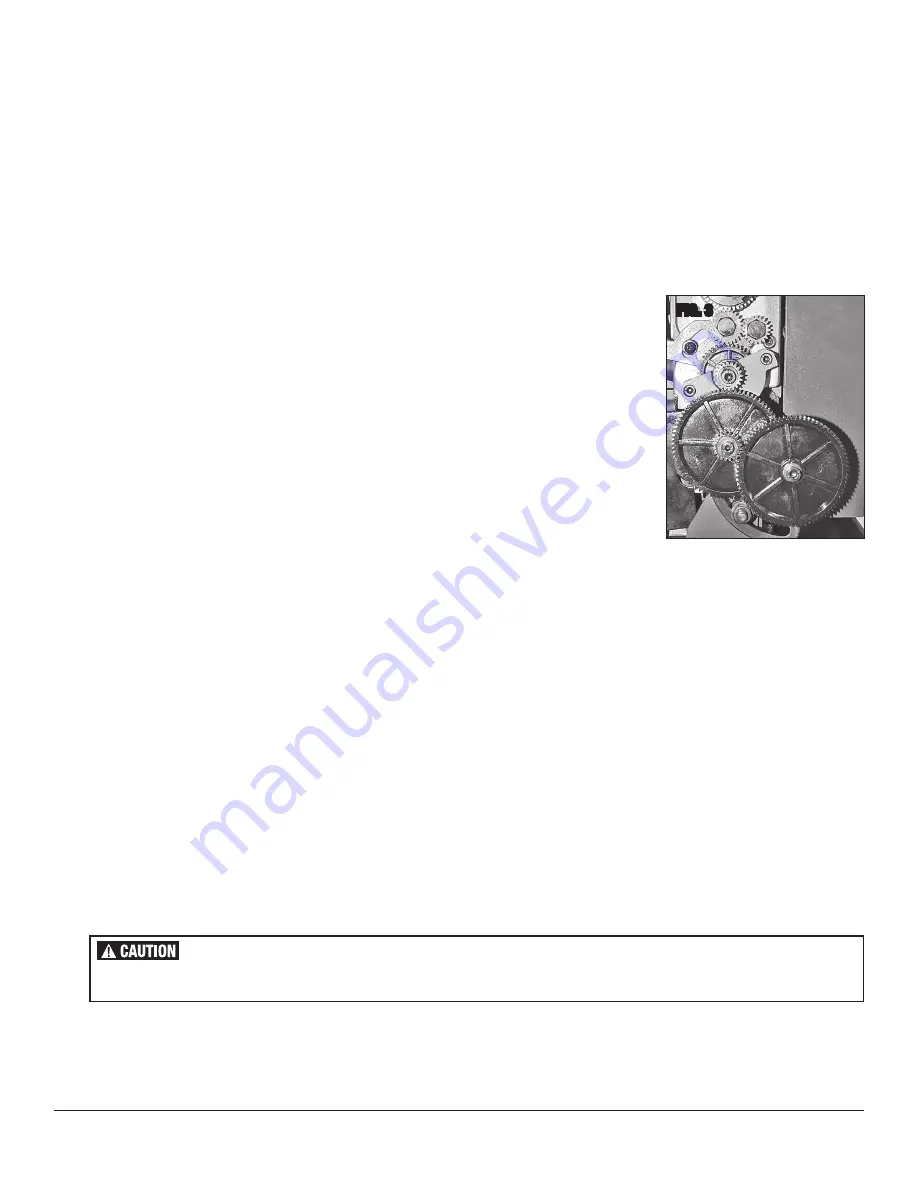
8
Eastwood Technical Assistance: 800.343.9353 >> tech@eastwood.com
LATHE FEATURES AND COMPONENTS
THE HEADSTOCK
• The motor provides a direct drive to the Spindle via an internal tooth type drive belt. Spindle speed is variable and is regulated by the Speed Control Knob
“23”
located on the main control panel.
• The Spindle is designed with an internal, No.3 Morse taper to accommodate a center for use with a face plate or turning clamp.
• The 3-Jaw. Self-Centering Chuck
“4”
is mounted on the Spindle Flange
“2”
. To remove the chuck, simply remove the three securing nuts to the rear of the
flange allowing it to be pulled free together with the three mounting studs.
• Three interchangeable External Jaws
[M]
are also included which extend the capacity and flexibility of the chuck. Their uses and method of assembly is
described under the 'Accessories' section of this Manual.
• The spindle has 6 holes drilled in its flange to accommodate a range of optional fixtures such as Face Plate. 4-Jaw chuck etc., (not included).
THE RUNNING GEAR
• The Running Gear located at the left side of the unit is protected by a cover
“22”
, which is removed by
removing two counterbored socket-head screws.
• The gear train
(FIG 3)
, transmits drive power to the acme threaded Lead Screw. The Lead Screw acts as a
worm drive, and by operating the Auto Feed Lever
“15”
, which engages a nut with the Lead Screw or (worm),
drive is transmitted to the saddle, and consequently the cutting tool, thereby providing a power feed for screw
cutting or general turning operations.
• The rotational speed of the lead screw, and the rate of feed of the cutting tool, is determined by the selected
gear train configuration. This is explained in greater detail under the Screw Cutting Section of this Manual.
• The drive to the Leadscrew may be disconnected by moving Lever
“27”
to the NEUTRAL position. The same
lever is used to drive the Leadscrew in a FORWARD or REVERSE direction. (These actions are described in
detail in the Screw Cutting section of this Manual).
THE TAILSTOCK
• The Tailstock
“9”
, may be moved along the bed to any desired position and is secured in position by a single Locking Nut
“10”
, at its base.
• The Tailstock Spindle
“8”
is designed with an internal No.2 Morse Taper for use with the included Morse Taper No. 2 Dead Center
[L]
.
THE SADDLE
• The Saddle carries the Cross-Slide
“6”
, on to which is mounted the Compound Slide
“7”
with the Tool Post
“5”
allowing intricate and delicate operations
to be performed. It may be driven by the Leadscrew, via a Drive Nut, to provide automatic feed when the Auto Feed Lever
“15”
, mounted on the Apron
“17”
, is operated.
• The position of the tool is controlled by turning the Cross-slide Feed Handle
“16”
, which moves it across the Lathe, and the Saddle or Manual Feed Handle
“18”
, which moves it longitudinally. Additionally, the Compound Slide Feed Handle
“13”
may be used to move the tool by small increments at right angles
to the Cross-Slide, or the Slide may be set at an angle to the Cross-Slide so that short tapers or bevels may be cut. This is described in greater detail under
the 'Bevel Cutting' section of this Manual.
• The Cross-Slide
“6”
and Compound Slide
“7”
feeds each feature a scale. These scales are used to move the tool by precise amounts - one division being
equivalent to 0.001" [ 02.5mm]. As the feed handle is turned so does the scale. The scale on the Cross-Slide feed may also be held stationary while the
handle is turned. allowing the scale to be 'zeroed’. The procedure in which these scales are used is discussed in greater detail in the 'Operation' section of
this manual.
• The Tool Post
“5”
carries 8 socket head screws which are used to secure a cutting tool in any possible position. A maximum of four tools can be mounted
for convenience and to speed up the operation.
• The Tool Post
“5”
is rotated by loosening the Lever located on top. Rotate the Lever counter-clockwise sufficiently to allow the Tool Post to be lifted slightly
and then turned to the desired position. Rotate the Lever clockwise to lock the Tool Post into position.
THE MOTOR
• The Motor has no user serviceable parts inside however it does have replaceable Brushes accessible from the outside. Brush Replacement is described in
the Maintenance section of this manual.
FIG. 3
ALWAYS check to make sure the Post and the Tool are secured by locking down the Lever firmly and tightening the socket head
screws before attempting to perform any cutting operations.






























